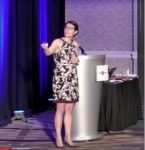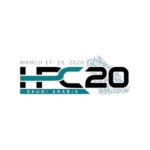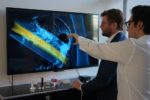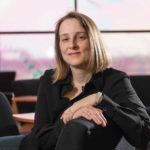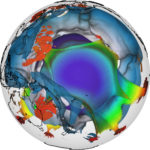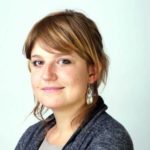Chelsea Harris from the University of Michigan gave this talk at the CSGF 2019. “I am developing a FLASH hydrodynamics module, SparkJoy, to perform these simulations at high order. These projects are part of a DOE INCITE project to explore progenitor effects on CC SNe and of the DOE SciDAC program “Towards Exascale Astrophysics of Mergers and Supernovae.”
Call for Papers: HPC Saudi Conference
The HPC Saudi Conference has issued its Call for Papers. Taking place March 17-19 in Riyadh, HPC Saudi enables participants from academia, industry, and government come together to share ideas and experiences, and discuss cooperation and collaboration, to advance the cutting edge in HPC, nationally and beyond. “This is the 10th HPC Saudi event and this year it will focus on the themes related to the convergence of HPC with big data, artificial intelligence (AI), and IoT. A particular focus is to explore the future HPC technologies in the era of ubiquitous smart computing, such as big data analytics leveraging edge, fog, cloud, and distributed computing for low-latency smart sensing and actor applications.”
ANSYS Student Software Surpasses One Million Downloads
ANSYS is lowering the barrier of adoption for simulation software through its growing academic program. Free student software — a key component of the program — recently surpassed more than one million downloads since its launch in late 2015, empowering students to develop skillsets they need to compete in the job market, stay ahead of the latest technology trends and make an immediate impact after graduation.
Reducing the risk of blood clots by supercomputing turbulent flow
People with mechanical heart valves need blood thinners on a daily basis, because they have a higher risk of blood clots and stroke. With the help of the Piz Daint supercomputer, researchers at the University of Bern have identified the root cause of blood turbulence leading to clotting. Design optimization could greatly reduce the risk of clotting and enable these patients to live without life-long medication.
Podcast: Will the ExaSky Project be First to Reach Exascale?
In this Lets Talk Exascale podcast, Katrin Heitmann from Argonne describes how the ExaSky project may be one of the first applications to reach exascale levels of performance. “Our current challenge problem is designed to run across the full machine [on both Aurora and Frontier], and doing so on a new machine is always difficult,” Heitmann said. “We know from experience, having been first users in the past on Roadrunner, Mira, Titan, and Summit; and each of them had unique hurdles when the machine hit the floor.”
Supercomputing Planet Formation at SDSC
Researchers are using a novel approach to solving the mysteries of planet formation with the help of the Comet supercomputer at the San Diego Supercomputer Center on the UC San Diego campus. The modeling enabled scientists at the Southwest Research Institute (SwRI) to implement a new software package, which in turn allowed them to create a simulation of planet formation that provides a new baseline for future studies of this mysterious field. “The problem of planet formation is to start with a huge amount of very small dust that interacts on super-short timescales (seconds or less), and the Comet-enabled simulations finish with the final big collisions between planets that continue for 100 million years or more.”
Simulating the Earth’s mysterious mantle
Scientists are taking advantage of an $2.5 million NSF grant to develop a new framework for integrated geodynamic models that simulate the Earth’s molten core. “Most physical phenomena can be described by partial differential equations that explain energy balances or loss,” said Heister, an associate professor of mathematical sciences who will receive $393,000 of the overall funding. “My geoscience colleagues will develop the equations to describe the phenomena and I’ll write the algorithms that solve their equations quickly and accurately.”
Dr. Alice-Agnes Gabriel from LMU wins Ada Lovelace Award for HPC
Dr. Alice-Agnes Gabriel from LMU is the winner of the 2020 PRACE Ada Lovelace Award for HPC for her outstanding contributions to HPC in Europe. “Dr. Alice-Agnes Gabriel uses numerical simulations coupled to experimental observations to increase our understanding of the underlying physics of earthquakes. The work includes wide scales and can improve our knowledge and safety against these natural phenomena.” says Núria López, Chair of the PRACE Scientific Steering Committee.
Altair Acquires newFASANT for High-Frequency Electromagnetics
Today Altair announced the acquisition of newFASANT, offering leading technology in computational and high-frequency electromagnetics. “By combining its people and software into our advanced solutions offerings, we are clearly emerging as the dominant player in high-frequency electromagnetics – technology that is critical for solving some of the world’s toughest engineering problems.”
Mapping Disasters with Artificial Intelligence
In this Chip Chat podcast, Intel’s Alexei Bastidas describes the technology behind making maps from satellite images. “Good maps rely on good data. The Red Cross’ Missing Maps Project leverages AI to provide governments and aid workers with the tools they need to navigate disasters like hurricanes and floods. Using a wealth of satellite imagery and machine learning, the Missing Maps Project is working to make villages, roads, and bridges more accessible in the wake of devastation.”

